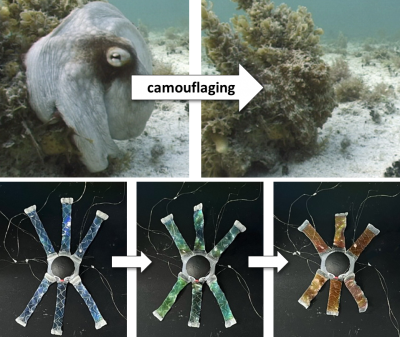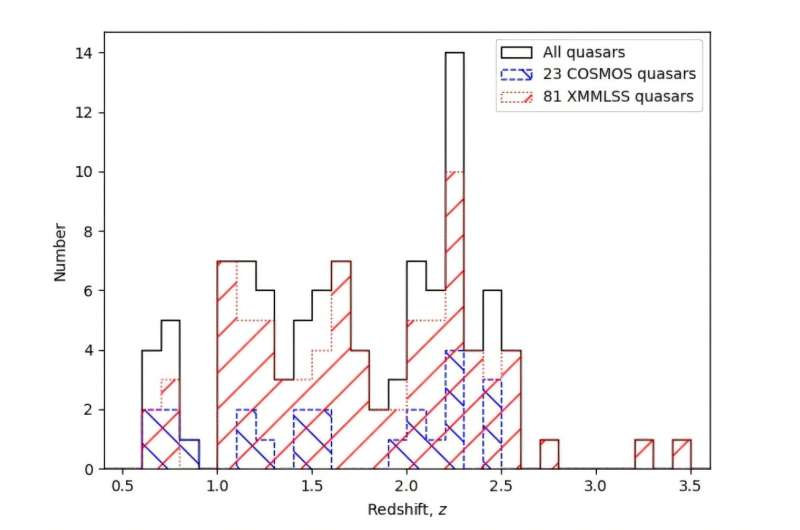A team of astronomers from Rhodes University and various institutions has conducted a significant study of 104 quasars identified in the MIGHTEE survey. The findings, published on July 16, 2025, on the preprint server arXiv, promise to enhance understanding of these luminous celestial objects.
Quasars, or quasi-stellar objects, are incredibly bright and distant entities, functioning as essential tools in astrophysics and cosmology. They are classified as active galactic nuclei (AGN) with high luminosity, emitting electromagnetic radiation across various wavelengths, including radio, infrared, visible, ultraviolet, and X-ray.
The MIGHTEE survey, utilizing the MeerKAT radio telescope in South Africa, aims to produce deep images of the extragalactic sky. This initiative facilitates the exploration of the cosmic evolution of galaxies, including AGNs. The recent research, led by Sarah V. White from Rhodes University, focused on unobscured type I quasars, which display broad emission lines.
Key Findings from the Quasar Analysis
The research analyzed 104 unobscured type I quasars located within the COSMOS and XMM-LSS fields of the MIGHTEE survey. These quasars were selected based on their color characteristics, achieving a 1.3-GHz flux density with an approximate root mean square of 3.0 μJy beam-1. The study utilized extensive multiwavelength datasets available in these fields, allowing for a statistically robust examination of both radio-loud and radio-quiet quasars.
The quasars studied exhibited redshifts ranging from 0.6 to 3.41, with a median redshift of around 1.68. The fraction of radio-loud quasars in this sample was estimated at 5%, aligning with previous studies on similar quasar samples. Interestingly, the proportion of quasars with radio emission predominantly driven by AGN was found to be lower than in other analyses of the MIGHTEE dataset.
The research team speculated that the lower radio flux density limit of the survey images could contribute to this discrepancy, increasing sensitivity to lower radio luminosities linked to star formation. Furthermore, the study revealed a notable increase in the fraction of potential starburst galaxies among the quasars as redshift increased, rising from 31% to 63% in the highest redshift group.
Implications for Future Research
The authors of the study highlighted that the increased prevalence of starbursts at higher redshifts complicates the application of the “radio-excess” method, which is typically employed to ascertain whether the AGN dominates the total radio emission in a quasar system. They concluded that future methodologies for selecting and analyzing AGN should be approached with greater scrutiny.
This research not only advances knowledge about quasars but also emphasizes the complexity of understanding their properties in the context of cosmic evolution. As astronomers continue to explore the universe’s vastness, studies like this one play a crucial role in unraveling the mysteries of our cosmos.
This article is based on the work of Tomasz Nowakowski, edited by Sadie Harley, and reviewed by Andrew Zinin. The reporting reflects a commitment to independent science journalism, highlighting the importance of ongoing support from readers to maintain this endeavor.





































































